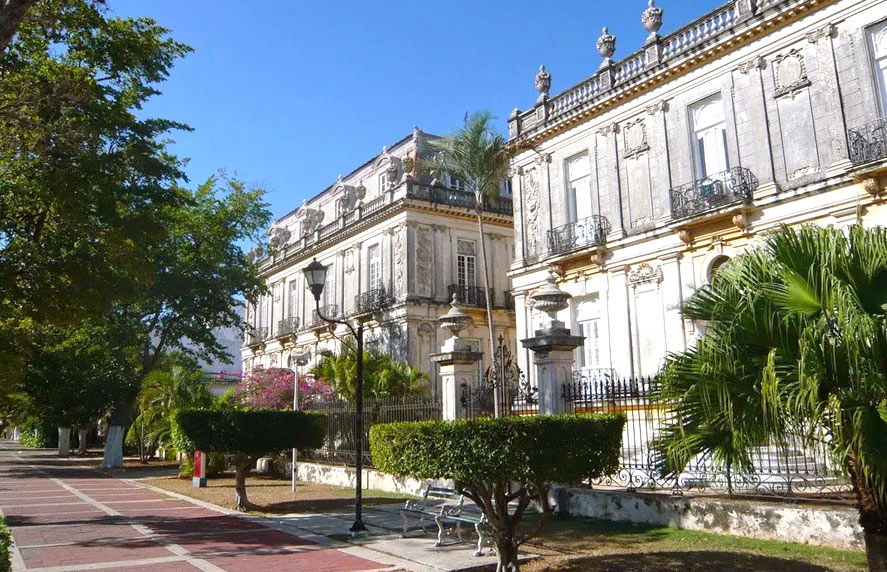
- Date: 07/06/2020
Paseo de Montejo - The Heart of Merida
There is an avenue in Merida that connects the Santa Ana neighborhood in the heart of the city with the beginning of the highway to Progreso Port, that avenue is Paseo de Montejo. A road of vital importance to the city, the avenue harbors a variety of banks, museums, hotels, and government buildings central to the city’s day-to-day life. Like many other Mexican cities, Mérida has a rich cultural past much of which is reflected in the rich architecture of its plazas and many buildings. In Mérida this is most present in Paseo de Montejo.
Named to honor Francisco de Montejo, Yucatan’s conqueror and founder of Merida, the avenue was originally built between 1888 and 1904 in a time of economic prosperity brought by the heyday of the henequen industry. The avenue was then extended in three different times: 1926, 1950, and 1979 and finally with the addition of the Plaza del Remate in 1995, the only expansion Southwards. The original part of the avenue was designed drawing inspiration from the elegant French boulevards of the time with their ample corridors flanked by trees, an ornamental median and multiple roundabouts where historical monuments were erected.
It comes as no surprise then that the state’s government as well as many of the time’s rich and powerful decided to settle along this road. Great mansions equally inspired in the French neoclassical style line both sides of the boulevard. Today most of these mini-palaces are home to corporate headquarters, banks, restaurants, boutique hotels, bars and shops yet they retain the charm of their original architecture in full.

Now, the best way to live this experience is by foot. Wether you start in the Remate plaza and walk North or you begin your trek at any other point and finish at the Remate, you’re in for a fascinating walk. We suggest you start your journey on an empty stomach because you are going to find some of the city’s best coffee shops, bakeries, ice cream shops, restaurants and bars along your way so you will have many perfect opportunities to satiate any hunger and craving. Throughout the way you can admire the architecture of the many mansions on both sides of the boulevard, perhaps the most iconic being the twin houses. Two great, identical mansions built as replicas of French buildings of the time, the twin houses are the prime example of Merida’s wealthy past. While many of the route’s antique buildings are privately owned and not open to visitors, there are a few that are. The most important of these are the Regional Museum of Anthropology and Merida’s Historical Archive.
Whatever you do on Paseo de Montejo, you must visit the “Monumento a la Patria” (Monument to the Homeland). A huge monument sculpted by the great Colombian artist Romulo Rozo. While this one is the largest of the monuments it is far from the only one: you will find all types of monuments, busts, and statues dedicated to important characters of our history like the Montejo family and Gonzalo Guerrero.
Here is one last tip for you: the original part of the boulevard is closed to cars every Sunday between 8:00am and 12:30pm. While this is the time when you will find the most visitors, it is definitely the best time to visit. You will have the whole road to walk or ride a bike along this historic area without having to worry about traffic.
So now you see why this is something that you must experience when you visit Merida. Make sure you set a few hours aside during your trip to make the trek along our city’s heart. You will be charmed by the vistas, fall in love with the food, shop great Mexican products, and experience the true Merida.
